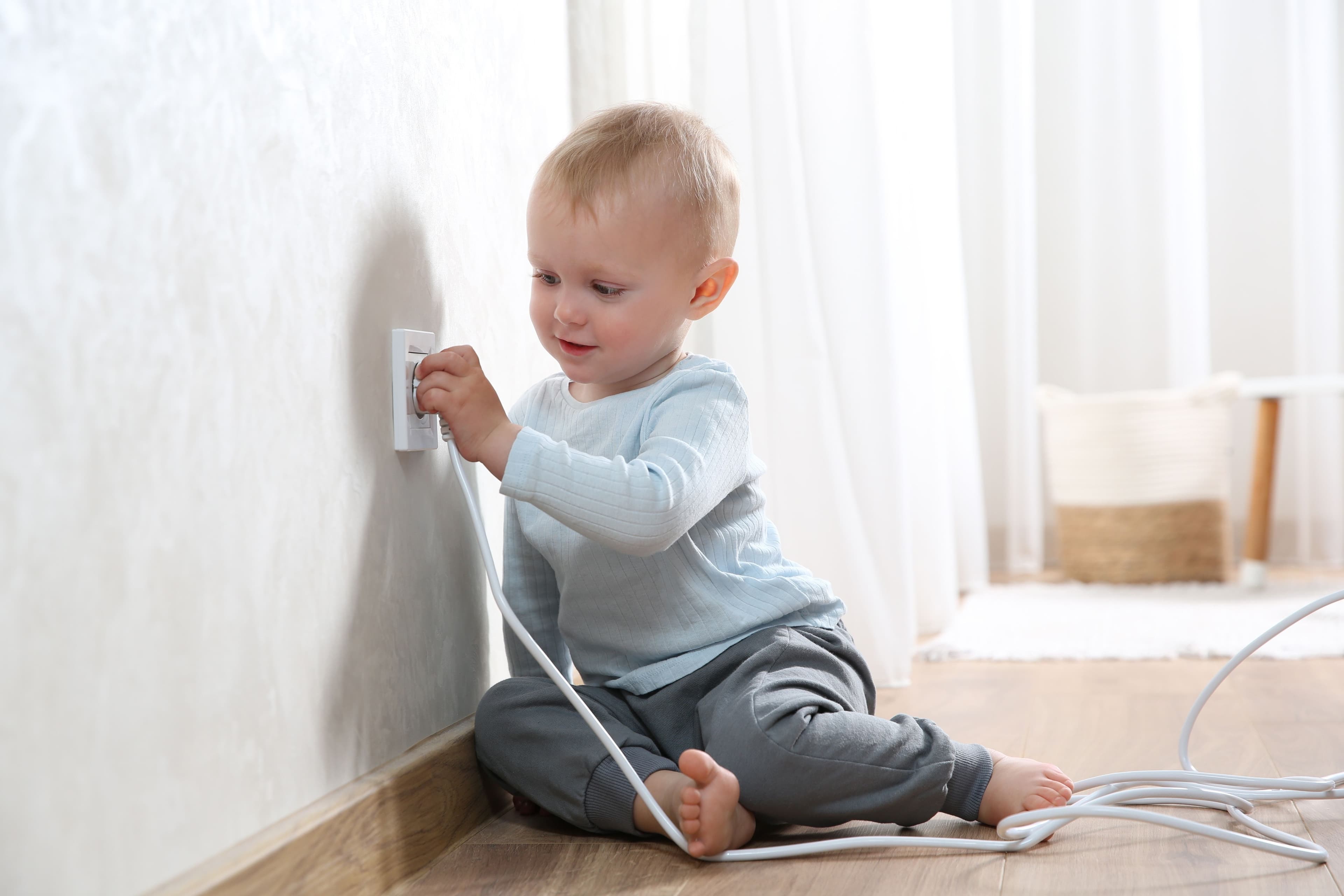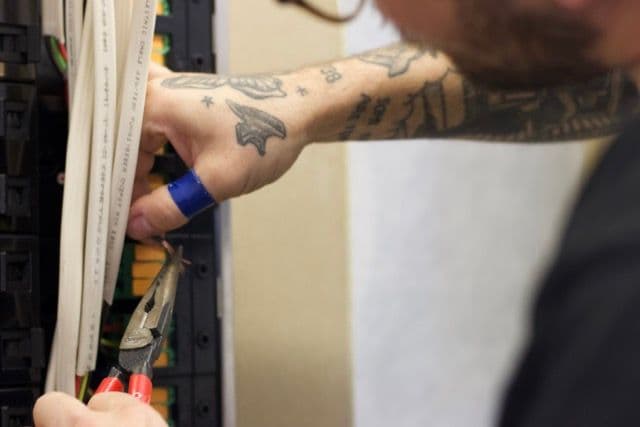Safe & Sound: The Essential Role of Residual Current Devices (RCDs) in Your Home’s Electrical Safety
Brendon Hale
Head of Research & Technology

We live in an electric world. From the moment our alarm blares to the last glow of the nightlight, electricity is the invisible force powering our lives. And like any powerful tool, it can be dangerous, even fatal, if not managed correctly. This is why electrical panels are subject to rigorous regulations, ensuring that our homes are safeguarded against electrical hazards.
Your electric panel may include Residual Current Devices (RCDs), also known as Residual Current Circuit Breakers (RCCBs) or simply safety switches. These are among the most reliable and cost-effective life-saving devices. According to Master Electricians Australia, around 15 Australians are killed and about 300 are hospitalised each year due to electrical accidents that could have been prevented by RCDs. Common causes of these accidents include children tampering with appliances, accidental contact with live wires, or water damage to electrical equipment.
Understanding RCDs and their importance can help protect your family and property. This article will explain what RCDs are, what they prevent, how they work, the different types, and which one is best suited for your home.
What Are RCDs?
An RCD is designed to do one job effectively–to protect you from being electrocuted and, in some rare cases, prevent your property from electrically-caused fires. It continuously monitors the electrical current flowing in and out of your home's electrical wiring. As soon as it detects the slightest imbalance in the current flow, the RCD will cut off the power supply to the protected circuit(s) in less than 0.03 seconds to minimise potential harm and/or damage.
Let's take the toaster in your kitchen as an example. If the toaster's insulation becomes damaged and the live wires come into contact with the metal casing, there is a serious risk of electric shock if someone touches the appliance. In this case, a leakage current would flow through the person's body to the ground, potentially causing burns, muscular contractions, heat fibrillation or worse.
This is where the RCD comes in–it constantly monitors the amount of current flowing through the live and neutral wires. If it detects a discrepancy between these currents, which indicates leakage, it will trip and cut off the power supply to the circuit.

What are the Different Types of RCDs?
RCDs come in various types, each designed to meet different safety requirements. Here, we focus on Type A and Type B RCDs, the most relevant for home use.
Type A RCDs detect both Alternating Current (AC) and pulsating Direct Current (DC), which makes them suitable for most standard outlets and appliances in your home, such as kettles, toasters, and TVs.
Type B RCDs offer more comprehensive protection than Type A RCDs. They can detect AC leakage currents, pulsating DC currents, and smooth DC leakage currents, making them ideal for homes with modern kitchen equipment, laundry, heat pumps, solar panels, EV chargers, and LED lighting.
Which RCD Is Right for Your Home?
When deciding which RCD to install in your home, consider the types of devices and systems you have. While Type A RCDs are adequate for many standard household circuits, Type B RCDs offer more comprehensive protection, particularly in homes with advanced electrical systems. If unsure, it always pays to talk to a licensed electrician in New Zealand or Australia.
The Advantages of Choosing Type B RCDs for Your Home
When it comes to safeguarding your home and family from the potential dangers of electricity, choosing the right RCD is paramount. While both Type A and Type B RCDs offer essential protection, the comprehensive coverage provided by a Type B RCD delivers unparalleled peace of mind. Let's delve deeper into the advantages of Type B RCDs.
Unparalleled Protection: Type B RCDs offer superior safety by detecting a broader range of electrical faults. This includes alternating current, pulsating direct current, and smooth DC leakage currents, often found in modern appliances, renewable energy, and battery storage systems.
Future-Proof Your Home: As technology advances and more electronic devices enter our homes, the risk of electrical hazards increases. Type B RCDs provide comprehensive protection for today's electrical systems and are well-equipped to handle the demands of tomorrow's technology, such as electric vehicles and solar panels.
Peace of Mind: Knowing your home is protected by a Type B RCD provides unparalleled peace of mind. It’s a proactive step in safeguarding your family from the dangers of electric shock and reducing the risk of electrical fires.

RCD Maintenance, Testing, and Replacement
To ensure RCDs remain effective, regular maintenance and testing are essential.
- Testing: All RCDs come with a test button. Press this button monthly to ensure the device is functioning correctly. If the RCD does not trip, it may be faulty and should be inspected by a qualified electrician.
- Maintenance: Keep RCDs free from dust and moisture. Check the surrounding area for any signs of wear or damage.
- Replacement: RCDs have a lifespan of about 10 to 15 years. If your RCD is older than this or shows signs of malfunction, it should be replaced.
Cost of Installing RCD Protection
The cost of installing RCD protection varies depending on the complexity of your home’s electrical system and the number of circuits to be covered. On average, the cost for installing a basic RCD system in a standard home can range from $200 to $400+ per RCD. This includes the cost of the device and installation by a licensed electrician. For more complex systems or additional protection, costs may be higher.
Regulations and Requirements
In both New Zealand and Australia, electrical safety regulations mandate the installation of RCDs to protect individuals from electric shocks. The specific requirements can vary but generally include:
New Zealand: The New Zealand Wiring Rules mandate using RCDs for all new circuits originating at the switchboard supplying lighting or socket outlets (power points) in domestic buildings must have RCD protection.
Australia: The Australian Wiring Rules specify that all domestic and residential applications within Australia must have an RCD installed with a maximum rated residual current of 30 mA for all subcircuits. Recent updates have emphasised the importance of using Type B RCDs in certain applications.
Despite RCDs being mandated to reduce electrical injuries and fatalities, a concerning gap persists between protection and perception. While these life-saving devices have made significant strides in enhancing home safety, the reality is that millions of people remain vulnerable. Alarmingly, in Australia, 40% of homes remain completely unprotected by RCDs, while another 60% have partial coverage, often limited to power outlets or light circuits. This stark contrast is underscored by the fact that over 80% of homeowners believe they are adequately protected, revealing a widespread misconception about the extent of their electrical safety.
This disconnect highlights the urgent need for greater awareness and education about the importance of comprehensive RCD protection.
Total Protection, No Compromises

At Basis, electrical safety is our top priority. Every circuit in the Basis smart panel comes with RCD protection—no exceptions. We are dedicated to providing maximum safety without cutting corners. Your oven, heat pump, and every appliance deserve the highest level of protection.
Upgrading to a Type B RCD has never been easier. Whether you've just bought an electric vehicle or want to enhance your home's safety, upgrading to a Type B RCD is essential. Traditional panels often require extensive rewiring, but with the Basis smart panel, it’s simple. Our system is pre-configured for both Type A and Type B RCDs, allowing for a quick switch with just a few taps in the app by your electrician.
Child safety is a crucial concern. Children are more vulnerable to electric shocks, yet while childcare centres must have RCDs with lower thresholds, homes are not required to meet the same standard. Basis addresses this oversight with adjustable thresholds. You can easily set lower limits in areas like your child's bedroom, adding an extra layer of protection.
With Basis, you’re not just purchasing a product; you’re investing in peace of mind. Our unwavering commitment to safety ensures that your home is protected to the highest standards.
Ensuring Your Home's Electrical Safety with RCDs
Electricity is a vital part of modern life, but it also poses significant risks. Devices like RCDs are indispensable safety measures that protect against electrocution and, at times, electrical fires. By rapidly detecting imbalances in electrical current, RCDs can prevent severe injuries and property damage.
Investing in RCD protection is an investment in peace of mind. With Basis, you get Type A RCD on every circuit at a minimum and can easily upgrade to advanced Type B RCDs, providing your family with the highest level of electrical safety. Don't compromise on your home's protection. Embrace the power of RCDs and safeguard your loved ones today.